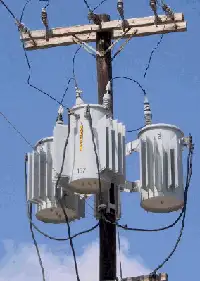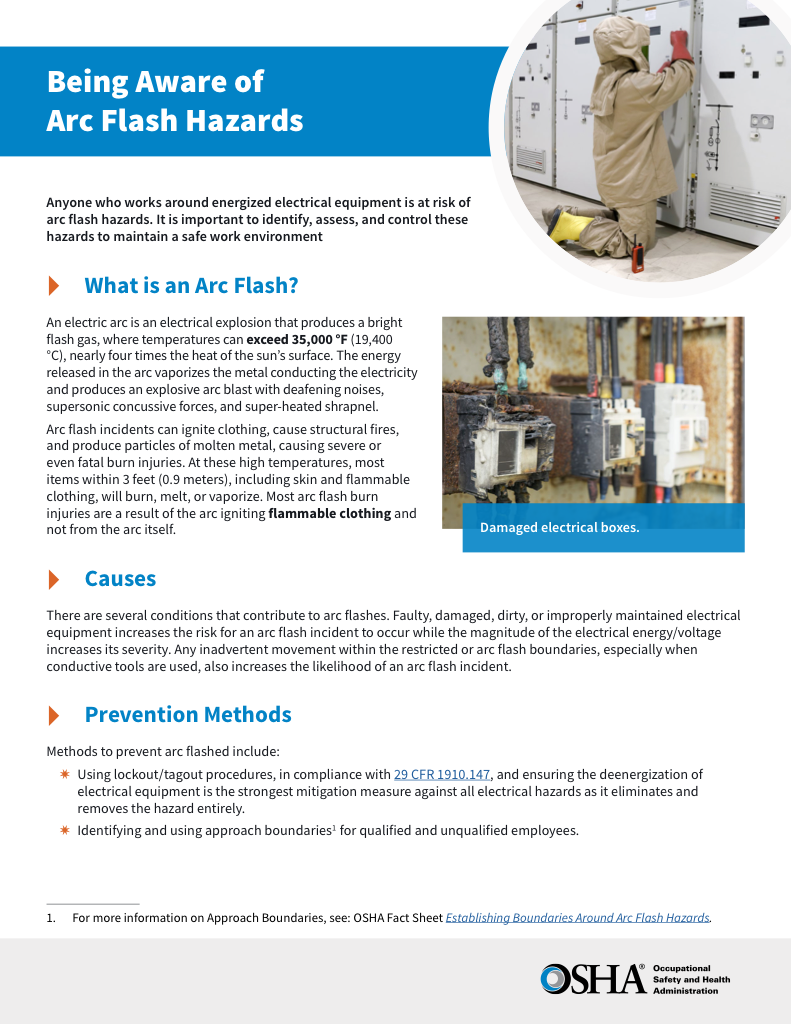Pole Mounted Transformers
By R.W. Hurst, Editor

Power Transformer Maintenance Training
Our customized live online or in‑person group training can be delivered to your staff at your location.

- Live Online
- 12 hours Instructor-led
- Group Training Available
Download Our OSHA 4475 Fact Sheet – Being Aware of Arc Flash Hazards

- Identify root causes of arc flash incidents and contributing conditions
- Apply prevention strategies including LOTO, PPE, and testing protocols
- Understand OSHA requirements for training and equipment maintenance
Pole mounted transformers step down high voltage electricity to safe distribution levels for homes and businesses. Mounted on utility poles, these distribution transformers ensure reliable service, efficient power delivery, and safety in electrical networks.
What are Pole Mounted Transformers?
Pole mounted transformers play a crucial role in the distribution of electrical power in residential and rural areas. They:
✅ Are electrical distribution devices installed on utility poles to reduce high voltage for residential and commercial use.
✅ Provide efficient power delivery and voltage regulation in urban and rural networks.
✅ Are designed for reliability, they support grid safety and continuous electricity supply.
Electrical Transformer Maintenance Training
Substation Maintenance Training
Request a Free Training Quotation
By stepping down high-voltage electricity to a lower voltage suitable for consumer use, these devices ensure a reliable and efficient power supply. This article examines the purpose, capabilities, installation requirements, and primary voltage specifications, providing a comprehensive understanding of their significance in modern electrical systems. Pole mounted transformers are part of the broader family of utility transformers, which are essential for delivering electricity safely and efficiently across the grid.
Pole Mounted Transformers – Key Specifications and Features
| Feature/Category | Details |
|---|---|
| Purpose | Steps down high voltage (7.2–34.5 kV) to safe secondary levels (120/240V) for homes and businesses |
| Common Applications | Residential areas, rural distribution, small commercial loads |
| Mounting Location | Utility poles, typically above ground for easy access and reduced land use |
| Types | Conventional (external protection) and CSP – Completely Self-Protected (internal fuses/surge arresters) |
| Phases Available | Single-phase (common in rural/residential) and Three-phase (for larger loads) |
| Typical Capacity Range | Single-phase: few kVA up to several hundred kVA; Three-phase: up to and above 1,000 kVA |
| Insulation/Cooling | Mineral oil-filled tank for dielectric insulation and heat dissipation |
| Primary Voltage Range | 7.2 kV, 14.4 kV, 34.5 kV (depending on grid design) |
| Secondary Voltages | 120/240V for residential, higher voltages for commercial/industrial use |
| Key Installation Needs | Strong pole support, safe clearances, proper grounding, compliance with local codes |
| Reliability Features | CSP models with built-in protection; conventional models require external devices |
Frequently Asked Questions
What is the Purpose of Pole Mounted Transformers?
They are designed to convert high-voltage electricity from distribution lines to a lower voltage that can be safely used in homes and businesses. Typically found on utility poles, these devices are essential in areas where underground power lines are not feasible or cost-effective. They help distribute power from the main grid to individual consumers, ensuring a consistent 60 Hz frequency and stable voltage levels. They come in various configurations, including single-phase and three-phase models, to accommodate different power distribution needs. Compared to ground-level padmount transformers, pole mounted units are often chosen for rural and residential areas where underground installations are less practical.
FREE EF Electrical Training Catalog
Download our FREE Electrical Training Catalog and explore a full range of expert-led electrical training courses.

- Live online and in-person courses available
- Real-time instruction with Q&A from industry experts
- Flexible scheduling for your convenience
What is the Maximum Capacity?
The capacity varies depending on their design and application. Generally, single-phase pole mounted transformers can handle capacities ranging from a few kVA (kilovolt-amperes) to several hundred kVA. For larger applications, three-phase pole mount transformers are used, which can support significantly higher capacities, sometimes exceeding 1,000 kVA. The capacity is determined by the transformer's ability to handle the electrical load while maintaining efficiency and reliability. Completely Self-Protected (CSP) models often incorporate built-in protective features, such as fuses and surge arresters, thereby enhancing their ability to manage electrical loads safely. For higher capacity systems, utilities may rely on 3-phase transformers, which provide balanced voltage regulation for commercial and industrial applications.
What are the Requirements for the installation of Pole Mounted Transformers?
Installing them requires adherence to specific guidelines to ensure safety and functionality. Firstly, the pole must be sturdy and properly anchored to support the weight of the transformer, typically filled with mineral oil for insulation and cooling. The installation site should be accessible for maintenance and emergency services. Electrical clearances must be maintained to prevent accidental contact with high-voltage lines. Furthermore, proper grounding is crucial in protecting against electrical faults and lightning strikes. Compliance with local electrical codes and standards is mandatory, and regular inspections are necessary to ensure the installation remains in good condition.
What is the Primary Voltage of Pole Mounted Transformers?
The primary voltage varies depending on the distribution system to which they are connected. Common primary voltages include 7.2 kV, 14.4 kV, and 34.5 kV. These high voltage levels are stepped down to standard secondary voltages, such as 120/240V for residential use or higher voltages for industrial applications. The choice of primary voltage is influenced by factors such as the distance from the substation, the load requirements, and the overall design of the distribution network. Conventional pole mounted transformers and CSP models are designed to handle these primary voltages efficiently, ensuring stable power delivery to end users. Understanding the construction of a transformer highlights how pole mounted transformers are designed with durability and safety in mind to withstand outdoor environments.
Types of Pole Mounted Transformers
They are available in different types to suit various applications. The two main types are Completely Self-Protected (CSP) and Conventional models. CSP units are equipped with internal protective devices, such as fuses and surge arresters, making them self-sufficient in handling common electrical faults. This design simplifies installation and maintenance, as external protective devices are not required. Conventional ones, on the other hand, rely on external protection devices, which can be advantageous in certain applications where customized protection schemes are needed.
They are indispensable components of modern electrical distribution systems, ensuring the safe and efficient transmission of power from high-voltage lines to consumers. Their purpose, capacity, installation requirements, and primary voltage specifications are critical aspects that determine their effectiveness and reliability. Whether using single-phase or three-phase models, CSP or Conventional designs, pole mount transformers provide essential services that underpin the electrical infrastructure in residential and rural areas. By understanding their operation and requirements, utility companies and electrical engineers can ensure that pole mounted transformers continue to meet the demands of a growing and increasingly electrified world. Like other distribution transformers, pole mounted transformers play a vital role in stepping down high voltage to levels suitable for residential and commercial use.
Related Articles







